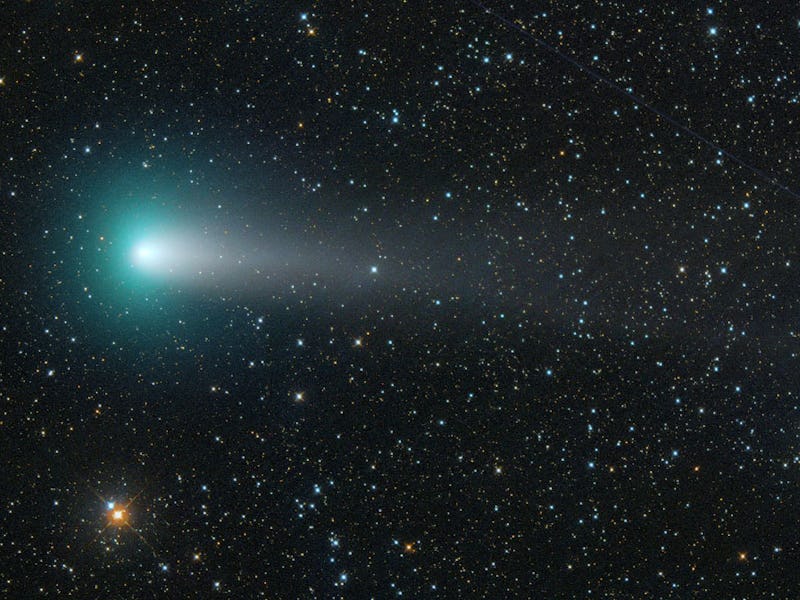This ancient comet may be behind the origin of life on Earth
An annual meteor shower could have transported the organic molecules that seeded life on our planet.

Comet 21P/Giacobini-Zinner is no stranger to Earth. Aside from appearing in our night skies every six and a half years or so, the small comet spits out ice and rock debris into space, which then falls to Earth every year with the annual Draconid meteor shower.
Now, scientists reveal that one of those earlier meteor showers may have played a starring role in the origin of life on Earth. The findings are detailed in a study published in the journal Icarus this week.
When it comes to tracing the early life on Earth, a missing piece of the puzzle has been how complex organic molecules like amino acids — the building blocks of life — arose. The new findings suggest these molecules actually originated in interstellar space, before hitching a ride on some space rocks and landing on Earth — essentially seeding life as we know it.
In 2005, a team of astronomers observed the Giacobini-Zinner comet on its familiar route orbiting the Sun. Using the Sun’s light, the scientists were able to look at the chemical composition of the comet, which revealed some unusual — and intriguing — characteristics.
They found bizarre infrared emissions radiating from the comet, indicating that it may be rich in complex organic molecules.
The story of comet 21P
Comet 21P was discovered by Michel Giacobini at the Nice Observatory in France in December of 1900.
It is quite small — stretching about 1.24 miles in diameter. The comet’s meteor showers, known as the Draconid showers, typically take place in early October. They are no spectacle either — they usually peak at just a few meteors an hour. There are exceptions: In the years 1933 and 1946, dedicated followers of the annual meteor shower were treated to thousands of meteors an hour.
But despite its small size and seeming lack of firework-power, the comet’s other properties have kept scientists’ interest. And this latest discovery shows why.
The researchers found bizarre infrared emissions radiating from the comet, indicating that it may be rich in complex organic molecules.
Did life come from comets?
Organic molecules have been detected once before in a comet, when the Rosetta spacecraft collected dust grain samples from Comet 67P/Churyumov-Gerasimenko in 2017. Nearly half of the samples were made up of organic molecules.
Comet 67P is the only one humans have closely observed for an extended period of time, says Joseph Nuth, senior scientist for primitive bodies at NASA’s Goddard Space Flight Center. That suggests close observation is generally necessary for finding any evidence of organic molecules.
“It isn’t necessarily rare, but it’s hard to detect them in active comets,” Nuth tells Inverse.
And although it may be tricky to study the material of comets, they could provide answers as to how life originated on Earth.
Comets are made up of materials that date to the Solar System’s formation, and their icy bodies preserve a lot of this early material, despite being exposed to radioactive heating.
“If you really want to see the complex organics that might have been available at the beginning of the Earth,” Nuth says. “That might be the best place to look.”
Of course, the complex organic molecules that exist on Earth today may have formed on our planet, but scientists don’t actually know that for sure. However, they do have proof that they exist on comets.
“Since we don’t know how life could have originated on Earth, it’s possible that the building blocks of life may have fallen into the Earth,” says Nuth.